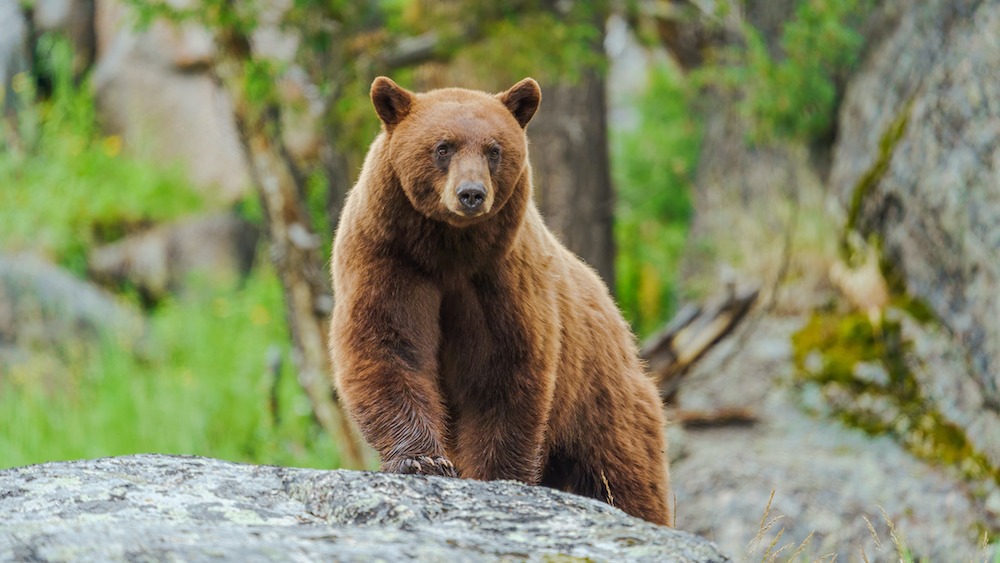American black bears are evolving to have cinnamon-colored coats, study finds
For the past 9,000 years, American black bears have slowly been turning red due to a genetic variant.

Some American black bears in the western United States have evolved to have cinnamon-colored fur. The new hue is likely due to a genetic variant similar to one that causes albinism in humans, a new study finds.
Researchers from the United States and Japan analyzed DNA samples from 151 American black bears (Ursus americanus) across the United States and Canada and found that those residing in western states such as Nevada, Arizona and Idaho were more likely to exhibit reddish-colored coats than the black fur for which the medium-size bears are named.
The researchers identified a mutation known as R153C in a gene called tyrosinase-related protein 1 (TYRP1), which causes an alteration in the coat's pigmentation that makes its fur the same color as a copper penny.
"TYRP1 is a known pigmentation gene in the pathway in the precursor molecules that ultimately produces either eumelanin (black or brown pigment) or pheomelanin (red or yellow pigment)," Emily Puckett, the study's lead author and an assistant professor in biological sciences at The University of Memphis in Tennessee told Live Science. "What it's doing is changing the amino-acid sequence of that gene."
This "cinnamon variant," which Puckett calls "a young mutation," came about approximately 9,360 years ago, according to the study, and has gradually spread through the population.
Related: Scientists extract ancient DNA from 32,000-year-old bear skull
Black bears elsewhere in the United States, including along the Great Lakes and in the Northeast, are less likely to exhibit red-hued fur because this young mutation "hasn't had enough time for natural migration," Puckett said.
Get the world’s most fascinating discoveries delivered straight to your inbox.
"Geography definitely plays a part," she said. "Our demographic modeling identified that the most likely place where the mutation arose was somewhere in the western region, very likely in the Southwest. From there, it expanded through gene flow throughout populations."
But even that is a slow process, with the majority of black bears on the East Coast still sporting jet-black fur.
"The bears don't pass through the Great Plains," Puckett said. "If they wanted to go east, they would have to go up north to Canada, across the Canadian [Prairies], around the Great Lakes and then drop back down into the eastern populations. That would take a long time. We do see that it's happening and is moving [eastward], but it's a process that takes time."
The researchers also examined whether or not the development of this gene in western American black bears had anything to do with thermoregulation, a mechanism that helps mammals regulate their body temperatures, or competition with another cinnamon-colored bear species: brown bears (Ursus arctos), also known as grizzly bears.
"Our modeling suggests that yes, [the gene is] adaptive in some way, but we're not 100% sure what it's adapted to," Puckett said. "We tested for both thermoregulation and competition with brown bears, and neither were strongly supported. Our new hypothesis is that it's a mechanism for selective advantage."
Interestingly, the variant is similar to one in humans known as oculocutaneous albinism type 3 (OCA3) that causes lighter colored hair and skin, two hallmarks of albinism. In some cases, it can also lead to poor eyesight.
"What is fascinating is that the bears aren't showing signs of visual problems," Puckett said, "since it would be hard for them to survive."
The findings were published Dec. 16 in the journal Current Biology.
Jennifer Nalewicki is former Live Science staff writer and Salt Lake City-based journalist whose work has been featured in The New York Times, Smithsonian Magazine, Scientific American, Popular Mechanics and more. She covers several science topics from planet Earth to paleontology and archaeology to health and culture. Prior to freelancing, Jennifer held an Editor role at Time Inc. Jennifer has a bachelor's degree in Journalism from The University of Texas at Austin.


